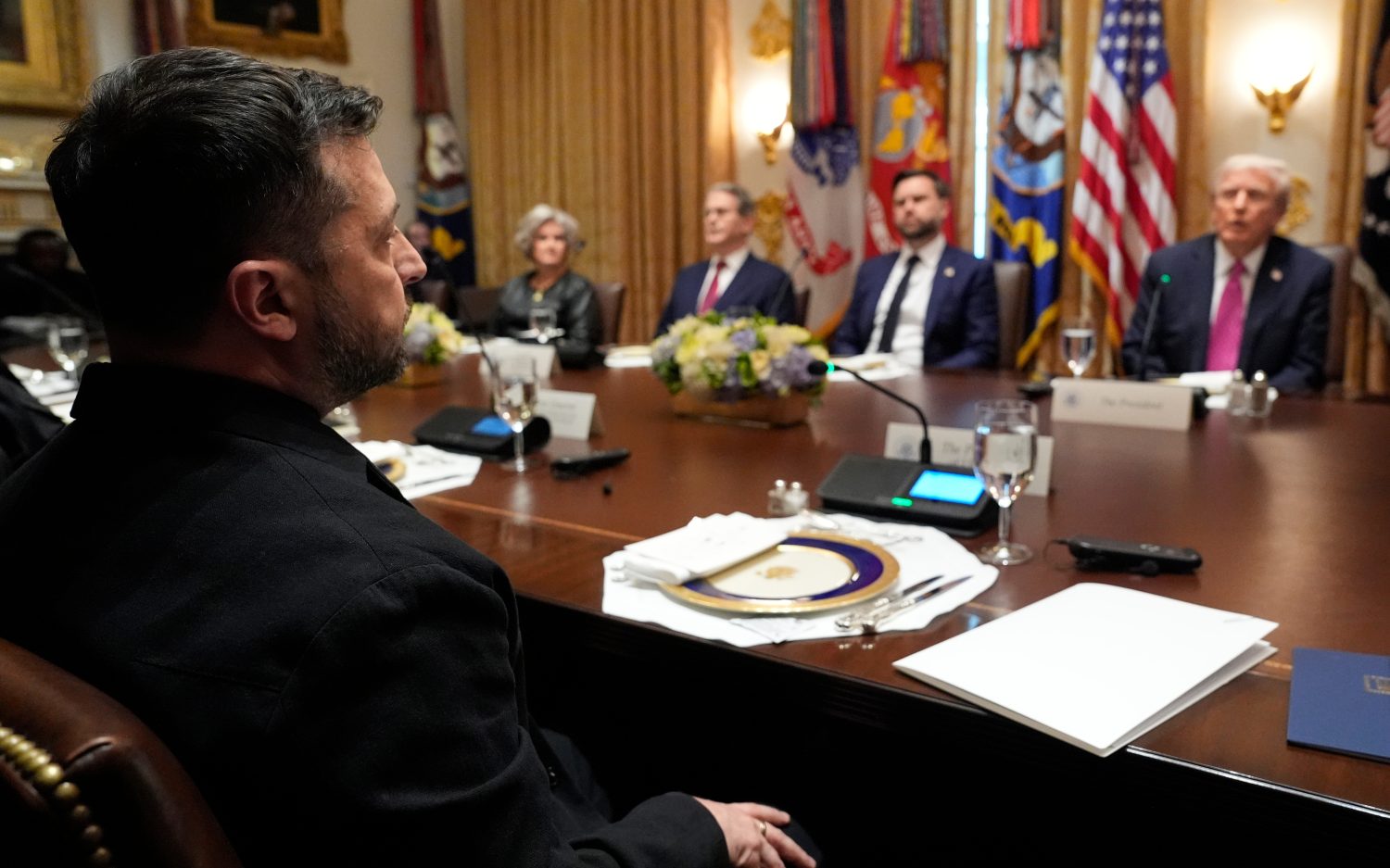The history behind Cosmo's war on women
Author Sue Ellen Browder talks about how the pro-abortion magazine and its supporters derailed the women’s movement
In the 1960s and ’70s, Sue Ellen Browder had a front-row seat to the unfolding of the feminist movement. She was a writer for Cosmopolitan, one of the nation’s most influential women’s magazines, and one, many say, that was more responsible than any other for the coarsening of American culture and the widespread acceptance of sexual promiscuity. Browder also wrote books with her husband Walter on parenting and other issues. Despite her success as a writer, she was often unhappy. She began to see that much of what she was writing was propaganda for the sexual revolution, and she said her own conscience was becoming wobbly, leading to a point in her life where she had an abortion. Following a conversion to Catholicism and Walter’s death from cancer, Browder took five years to write a book that is both a personal memoir and the untold story of the women’s movement. It’s called Subverted: How I Helped the Sexual Revolution Hijack the Women’s Movement. I had this conversation with Browder at the Capitol Hill Club in Washington, D.C., during activities surrounding the recent March for Life.
You’re a passionately pro-life Christian today, but that wasn’t always the case. Tell me your personal history. I grew up in a little town in Iowa. My daddy owned a shoe store. I wanted to be a writer when I grew up. I went to the University of Missouri School of Journalism and got a degree in reporting. I got a good background, and then I began to fall down.
University of Missouri is a great journalism school. But after college, you found out journalism was ethically challenged. My first job at a newspaper, I found out how to make up a source. A friend of mine who worked there said, “If you’re going to make up a source … ” I didn’t know that journalists were doing that, by the way. She says, “Don’t use ‘Smith’ or ‘Jones’ because that sounds made up, but use ‘Johnson’ because that’s the third most popular name in the country. It doesn’t sound made up.”
That was a common practice? It was common at Cosmopolitan when I went to work there in New York City. In fact [Editor-in-Chief] Helen Gurley Brown—I went there in the early ’70s—actually had a writer’s guideline on how to make up stories. Everybody was making them up at the magazine at that time because there weren’t that many young women jumping in the bed with men in those days, going out on first dates and having sex. We were making up this Cosmo lifestyle. That’s why I called that sexual revolution propaganda because it was half-truth, selected truth, and truth out of context.
How did you rationalize that behavior? I just told myself that it wasn’t that big of a deal, that everybody was doing it. I was very smitten by the glamour in New York City. I wanted to be successful. I was very ambitious, and I just thought this was the way they were doing it. Cosmo was the hottest women’s magazine in the nation at that time. I convinced myself that it wasn’t doing any harm.
What did you learn about the women’s movement while working at Cosmo? What I was learning was that the women’s movement and the sexual revolution in the early 1970s were two separate movements. Betty Friedan had started the women’s movement. She’d launched it with the 1963 book The Feminine Mystique. She had called Cosmo quite obscene and quite horrible. She said Cosmo denied a woman’s personhood. She was very opposed to the sexual revolution. Helen Gurley Brown would have loved for her sex revolution magazine to be part of the women’s movement, but, as I say, Betty Friedan thought it was quite obscene and quite horrible and even called for a boycott of the magazine at one point.
I read The Feminine Mystique a couple of years ago and thought it was very polemical and ideological. It had lots of pseudo-research such as subjective, personalized interviews of Friedan’s college classmates. But you’ve been pretty easy on Betty Friedan. Betty Friedan was fighting for women not being fired for being pregnant. I’ve been fired for being pregnant, in 1969. Her National Organization for Women (NOW) says, “We’re going to put a stop to this.” In some states, women couldn’t serve on juries. Married women could not apply for credit in their own names. There was a lot of discrimination. “Help wanted” ads were divided into “help wanted, male” and “help wanted, female” ads. The “help wanted, male” world had good jobs, and “help wanted, female” world had bad jobs, the lower income jobs. I was very much for the women’s movement because I’d been fired for being pregnant, and I wanted somebody to stop that.
Betty Friedan, in fairness, was opposed to abortion, at least in the early days of her public activism. She was co-opted, in a way, into being an abortion supporter. Is that fair to say? Yes, that’s exactly right. The Feminine Mystique did not even mention abortion or contraception. Betty even said later that ideologically she was never for abortion. But she knew a man, Larry Lader, who co-founded the National Abortion Rights Action League, which in those days was the National Association to Repeal Abortion Laws. It’s now NARAL Pro-Choice America. He founded that, and he was [Planned Parenthood founder] Margaret Sanger’s biographer. He convinced Betty Friedan that she needed to insert abortion into the women’s movement so that women could have control of their reproductive processes so that they wouldn’t have to be fired. They could control it.
You see what that did? By inserting abortion and contraception into the women’s movement, nobody had to actually take care of the other problems that women [had]. Women needed more free time. They needed more flex time. They needed time for their families. Now, it was a woman’s choice. If it was her choice to have an abortion, then it could be just business as usual in the corporation.
You cite a meeting that took place here in Washington, D.C., that was a defining moment in the fight to conflate women’s rights with contraception and abortion. That was Nov. 18, 1967, in the Chinese Room of the Mayflower Hotel here in D.C. About 100 people had met for the second annual National Organization for Women conference. Their goal that night was to draw up a political bill of rights that they could use to demand women’s rights in Congress. They had eight rights they drew up that night. Most of them, we would all agree with. Women shouldn’t be fired for being pregnant. There should be tax breaks for families with children. Childcare centers are a good idea.
There were two of those rights they fought over that night. One was the Equal Rights Amendment, which is now history. That didn’t pass. The other was No. 8, and that was the abortion right that Larry Lader, who had been Margaret Sanger’s biographer, convinced Betty to insert into the women’s movement. There were about a hundred people in the room that night, and only 57 people voted to insert abortion into the women’s movement. It created an absolute uproar. One-third of the women, these are early founders of NOW, walked out and later resigned from NOW over the abortion vote.
If you were pro-life, there was really no role for you in the women’s movement after that. There was a split. Most people don’t know where those women went from the Chinese Room when they left the National Organization for Women. They went and founded an organization called WEAL, Women’s Equity Action League in Ohio. … I don’t hear about it anymore because once they achieved their goals, they disbanded. This is the organization that fought to get “help wanted, male” and “help wanted, female” ads stopped. It was the organization that fought for girls sports programs in high schools and colleges. They also worked to get the Pregnancy Discrimination Act of 1978 passed, which made it illegal to fire a woman just because she was pregnant. They did a lot of work behind the scenes, and they were very powerful because they were small. There were only about 10,000 of them, but there were a lot of lawyers involved.
The National Organization for Women didn’t even have a lawyer on staff while a lot of this stuff was happening. I think it’s safe to say that pro-life feminists did a huge chunk of the work, and pro-abortion feminists took a large chunk of the credit.
One of the things that you have said about your writing career at Cosmo was it was not really journalism so much as it was propaganda. We’re talking here about a propaganda slogan that we’ve all heard: “No woman can call herself free who does not own and control her own body.” Of course that slogan doesn’t mean anything. Here’s what Noam Chomsky said about that, “That’s the whole point of good propaganda. You want to create a slogan that nobody is going to be against and everybody is going to be for. Nobody knows what it means because it doesn’t mean anything. Its crucial value is it diverts your attention from a question that does mean something: Do you support our policy? That’s the one you’re not allowed to ask.” …
There’s a famous saying that Frederica Mathewes-Green said: “No woman wants an abortion like she wants a Porsche or an ice cream cone. She wants an abortion like an animal caught in a trap wants to gnaw off its own leg.” We need to look at those reasons why women have abortions and try to change those reasons instead of saying, “Oh, OK. Let’s just have an abortion and be done with it.” No. Let’s give mothers and babies a chance.
At the end of the day, what do you want people to get out of your book Subverted? I was trying to tell the story of how the women’s movement was hijacked by the sexual revolution. I would like to see a lot more people separate that sexual revolution out from that women’s movement, recognizing that women have a right to equal respect and equal dignity in the public square and at home, but they don’t have to act like sluts to be free.
If you want to know another story, I can tell you the story about ... I had an abortion. Walter and I were one in our low times. Roe v. Wade had just come out. They were telling you that was “just a clump of cells.” You know, my conscience was a little wobbly at that time. We had an abortion.
My 45-year-old son did not know about it. Before this book came out, I had to tell him. I thought, “Oh, boy. I got to tell Dustin about that abortion.” I went down to Southern California. Dustin is not Catholic. He’s not a churchgoing man, but he does go to church with me, with his mom. I was praying during that church service, “Lord, give me the grace to know how to tell him this.” The message came to me very clearly. “Tell him now.” As I was walking across the parking lot after church, I said to Dustin, I said, “There’s something I got to tell you.” I didn’t know how he was going to take that. He just put his arm around me and gave me a big old bear hug. He says, “I’m sorry that happened to you.”
It was a beautiful, healing moment. I think we need to recognize that one-third of the people in this country are involved in an abortion in some way. They need love and healing.
Listen to Warren Smith’s complete conversation with Sue Ellen Browder on Listening In.
An actual newsletter worth subscribing to instead of just a collection of links. —Adam
Sign up to receive The Sift email newsletter each weekday morning for the latest headlines from WORLD’s breaking news team.





Please wait while we load the latest comments...
Comments
Please register, subscribe, or log in to comment on this article.